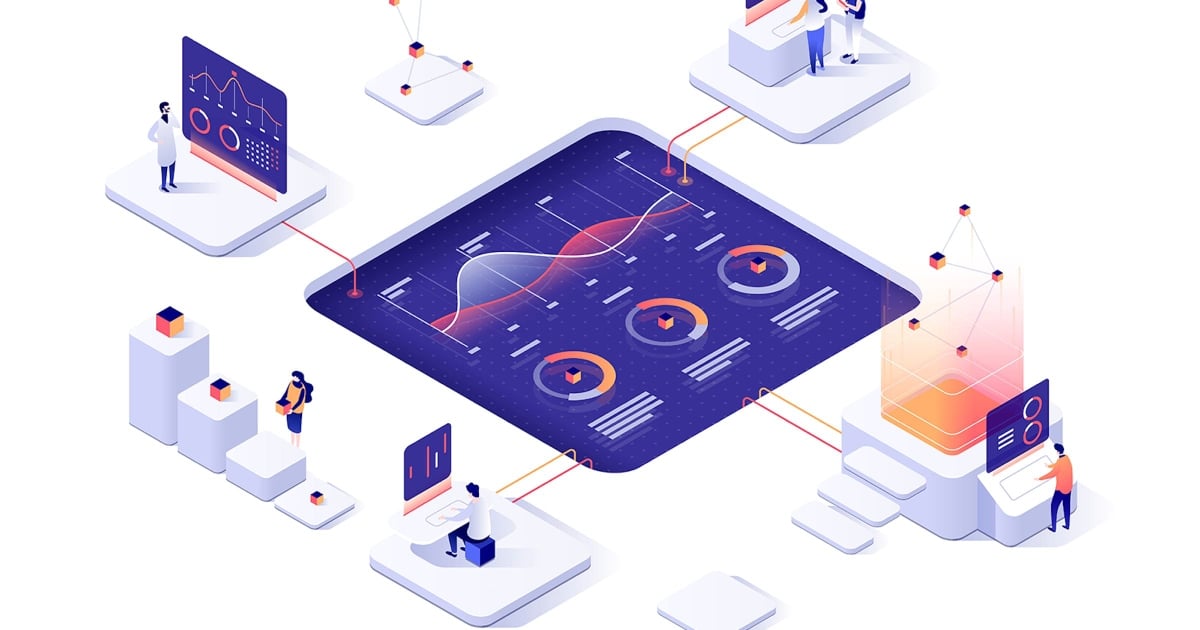Marketing automation has become an indispensable tool for businesses aiming to streamline their processes and increase revenue. By leveraging technology to automate repetitive tasks, companies can focus on creating meaningful connections with their audience while driving growth. This comprehensive guide explores ten effective marketing automation strategies that can significantly impact your sales in 2024.
The Benefits of Marketing Automation
Before diving into specific strategies, it’s essential to understand the benefits of marketing automation. These advantages include:
- Increased efficiency and productivity
- Improved lead generation and nurturing
- Enhanced customer experience through personalization
- Better data collection and analysis
- Consistent messaging across multiple channels
- Scalability of marketing efforts
- Improved ROI on marketing campaigns
By harnessing these benefits, businesses can create more effective marketing campaigns and drive substantial growth. Now, let’s explore the ten powerful strategies that can help you achieve these outcomes.
1. Personalized Email Campaigns

Email marketing remains a cornerstone of effective digital communication. However, generic mass emails no longer cut it. Personalization is key to engaging your audience and driving conversions.
Implementing Personalized Email Campaigns
- Segment your email list based on demographics, behavior, and preferences
- Use dynamic content to tailor messages to individual recipients
- Craft personalized subject lines to increase open rates
- Implement trigger-based emails for timely, relevant communication
Marketing automation best practices include testing different personalization strategies to determine what resonates best with your audience. By delivering tailored content, you can improve engagement rates and ultimately boost sales.
2. Lead Scoring and Nurturing
Identifying and nurturing high-quality leads is crucial for sales success. Marketing automation can streamline this process, ensuring that your sales team focuses on the most promising prospects.
Effective Lead Scoring and Nurturing Techniques
- Develop a point-based system to score leads based on demographics and behaviors
- Create automated workflows to nurture leads through the sales funnel
- Use behavioral triggers to send targeted content at the right time
- Implement lead routing to assign prospects to the appropriate sales representatives
By leveraging these techniques, you can improve your lead conversion rates and increase overall sales efficiency. Marketing automation implementation is key to successfully executing these strategies.
3. Chatbots and Conversational Marketing
Chatbots have revolutionized customer interaction, providing instant support and guiding users through the sales process. Implementing conversational marketing can significantly enhance user experience and boost conversions.
Maximizing Chatbot Effectiveness
- Design conversation flows that address common customer queries
- Integrate chatbots with your CRM to personalize interactions
- Use AI-powered chatbots to handle complex queries and learn from interactions
- Implement chatbots across multiple channels (website, social media, messaging apps)
Chatbots can provide 24/7 support, qualify leads, and even assist in completing purchases, making them a valuable asset in your marketing automation arsenal.
4. Dynamic Content Personalization

Delivering personalized content across your digital platforms can significantly improve user engagement and conversion rates. Marketing automation tools enable you to create dynamic content that adapts to individual user preferences and behaviors.
Implementing Dynamic Content Personalization
- Use behavioral data to tailor website content to individual visitors
- Implement product recommendations based on browsing and purchase history
- Create personalized landing pages for different audience segments
- Use geolocation data to provide location-specific content and offers
Dynamic content personalization can dramatically improve user experience, leading to increased engagement and sales. eCommerce marketing automation often relies heavily on this strategy to drive conversions.
5. Automated Social Media Marketing
Social media platforms offer immense potential for brand exposure and customer engagement. Automating your social media marketing can help maintain a consistent presence while freeing up time for strategic planning.
Effective Social Media Automation Strategies
- Schedule posts in advance to maintain a consistent posting schedule
- Use social listening tools to monitor brand mentions and industry trends
- Implement chatbots for customer service on social platforms
- Automate social media ad campaigns based on user behavior and preferences
While automation can streamline your social media efforts, it’s crucial to maintain a balance between automated and real-time interactions to preserve authenticity.
6. Predictive Analytics and AI-Driven Insights
Leveraging predictive analytics and artificial intelligence can provide valuable insights into customer behavior, enabling you to make data-driven decisions and optimize your marketing strategies.
Harnessing the Power of Predictive Analytics
- Use AI algorithms to predict customer lifetime value and churn risk
- Implement predictive lead scoring to identify high-potential prospects
- Utilize machine learning to optimize ad spend and targeting
- Employ sentiment analysis to gauge customer satisfaction and brand perception
By incorporating these advanced technologies into your marketing automation strategies, you can stay ahead of market trends and make proactive decisions to drive sales growth.
7. Omnichannel Marketing Automation
Modern consumers interact with brands across multiple channels. Implementing an omnichannel approach ensures a seamless customer experience across all touchpoints.
Implementing Omnichannel Marketing Automation
- Create a unified customer profile that consolidates data from all channels
- Develop consistent messaging and branding across all platforms
- Implement cross-channel retargeting campaigns
- Use marketing automation tools to orchestrate campaigns across multiple channels
An effective omnichannel strategy can significantly improve customer engagement and drive sales by providing a cohesive brand experience.
8. Automated Customer Retention Programs
Retaining existing customers is often more cost-effective than acquiring new ones. Automated customer retention programs can help nurture relationships and encourage repeat purchases.
Effective Customer Retention Automation Strategies
- Implement loyalty programs with automated point tracking and rewards
- Create automated win-back campaigns for inactive customers
- Use predictive analytics to identify at-risk customers and implement retention strategies
- Develop personalized upsell and cross-sell campaigns based on purchase history
By focusing on customer retention, you can increase customer lifetime value and boost overall sales. Marketing automation ROI is often highest when applied to retention strategies.
9. Automated Reporting and Analytics

To continuously improve your marketing efforts, it’s crucial to track and analyze your performance. Automated reporting can provide real-time insights into your marketing campaigns’ effectiveness.
Implementing Automated Reporting and Analytics
- Set up automated dashboards to track key performance indicators (KPIs)
- Create custom reports that align with your business objectives
- Implement A/B testing with automated result tracking
- Use attribution modeling to understand the impact of different marketing channels
Automated reporting ensures that you always have access to up-to-date information, enabling you to make data-driven decisions and optimize your marketing strategies.
10. Integration with Sales CRM
Aligning your marketing automation efforts with your sales CRM can create a seamless flow of information between marketing and sales teams, improving overall efficiency and effectiveness.
Maximizing Marketing and Sales Integration
- Sync lead data between marketing automation platforms and CRM systems
- Implement lead scoring models that are visible to both marketing and sales teams
- Create automated handoff processes for sales-ready leads
- Develop closed-loop reporting to track leads from first touch to closed deal
By integrating marketing automation with your sales CRM, you can ensure that both teams are working in harmony to drive sales growth.
Conclusion
Implementing these ten powerful marketing automation strategies can significantly boost your sales in 2024. By leveraging technology to streamline processes, personalize communications, and gain valuable insights, you can create more effective marketing campaigns that drive revenue growth.
Remember that successful marketing automation implementation requires careful planning and ongoing optimization. Consider working with a marketing automation agency or seeking marketing automation consulting tips to ensure you’re making the most of these powerful tools.
As you embark on your marketing automation journey, keep in mind that the ultimate goal is to create meaningful connections with your audience while driving business growth. By focusing on delivering value to your customers through personalized, timely, and relevant interactions, you can build lasting relationships that translate into increased sales and long-term success.
| Strategy | Key Benefits | Implementation Complexity |
|---|---|---|
| Personalized Email Campaigns | Improved engagement, higher conversion rates | Medium |
| Lead Scoring and Nurturing | Increased sales efficiency, better lead quality | High |
| Chatbots and Conversational Marketing | 24/7 support, improved user experience | Medium |
| Dynamic Content Personalization | Enhanced user engagement, higher conversion rates | High |
| Automated Social Media Marketing | Consistent brand presence, time-saving | Low |
| Predictive Analytics and AI-Driven Insights | Data-driven decision making, proactive strategies | High |
| Omnichannel Marketing Automation | Seamless customer experience, improved engagement | High |
| Automated Customer Retention Programs | Increased customer lifetime value, higher ROI | Medium |
| Automated Reporting and Analytics | Real-time insights, data-driven optimization | Medium |
| Integration with Sales CRM | Improved sales and marketing alignment, higher efficiency | Medium |
By implementing these strategies and continuously refining your approach based on data and customer feedback, you can harness the full potential of marketing automation to drive sales growth in 2024 and beyond.
FAQs
The main benefits are increased efficiency, higher conversion rates, improved lead nurturing, enhanced personalization, and better analytics and reporting. Automation streamlines repetitive tasks to focus energy on strategy.
Strong strategic thinking, analytics, customer insight, email and content marketing, data analysis, testing, and organizational skills are essential. Having technological proficiency helps as well.
It helps companies in all industries, but is especially beneficial for B2B companies with long sales cycles. Automation nurtures leads over time and provides data to inform sales interactions.
Begin by evaluating your goals, existing infrastructure, and integration requirements. Select a platform that aligns with your needs and budget. Develop buyer personas and map out customer journeys to inform content and workflows. Start small and expand over time.
Key metrics include email open/click rates, form submissions, new leads generated, sales opportunities created, pipeline influenced, and cost per acquisition or lead. Measure against past performance and goals.
Leverage data and combinations of attributes to create highly targeted segments. Use dynamic content and personalized subject lines. Send messages based on behaviors and context. Test and iterate over time. Prioritize relevance and value for recipients.
 Anas is our go-to copywriter with a knack for crafting persuasive and high-converting eCommerce landing pages. His passion for words and understanding of consumer psychology helps turn visitors into loyal customers. When he's not refining his copy, Anas enjoys exploring the latest digital marketing trends and experimenting with new writing techniques. His blend of creativity and strategic thinking makes him an indispensable part of our energetic team.
Anas is our go-to copywriter with a knack for crafting persuasive and high-converting eCommerce landing pages. His passion for words and understanding of consumer psychology helps turn visitors into loyal customers. When he's not refining his copy, Anas enjoys exploring the latest digital marketing trends and experimenting with new writing techniques. His blend of creativity and strategic thinking makes him an indispensable part of our energetic team.












